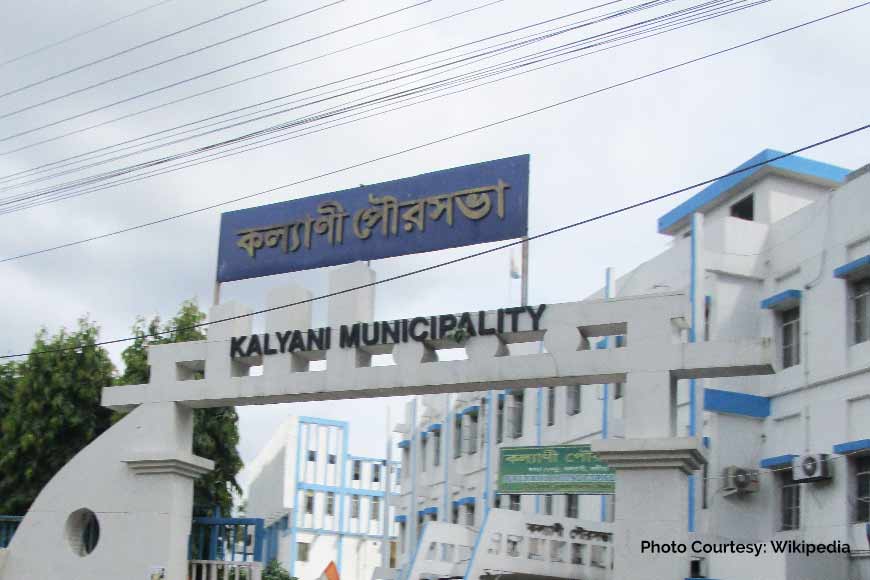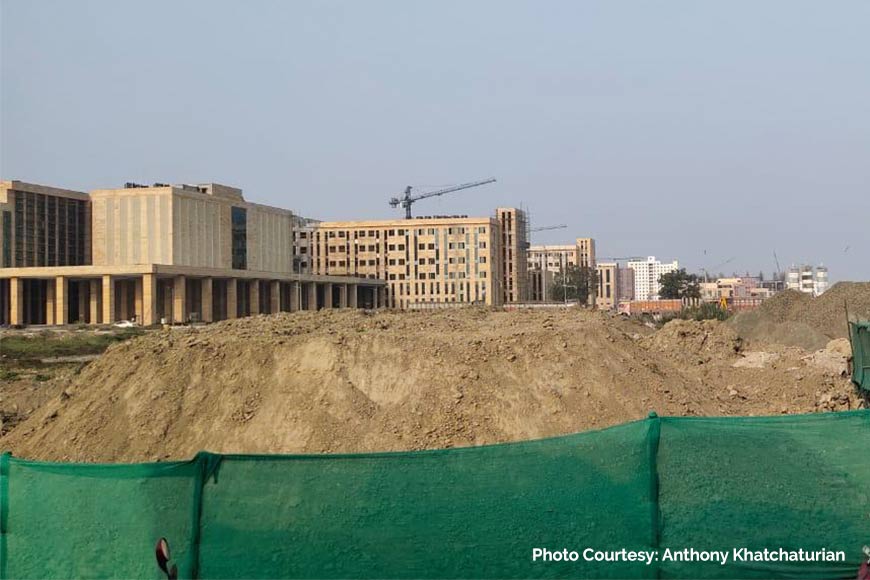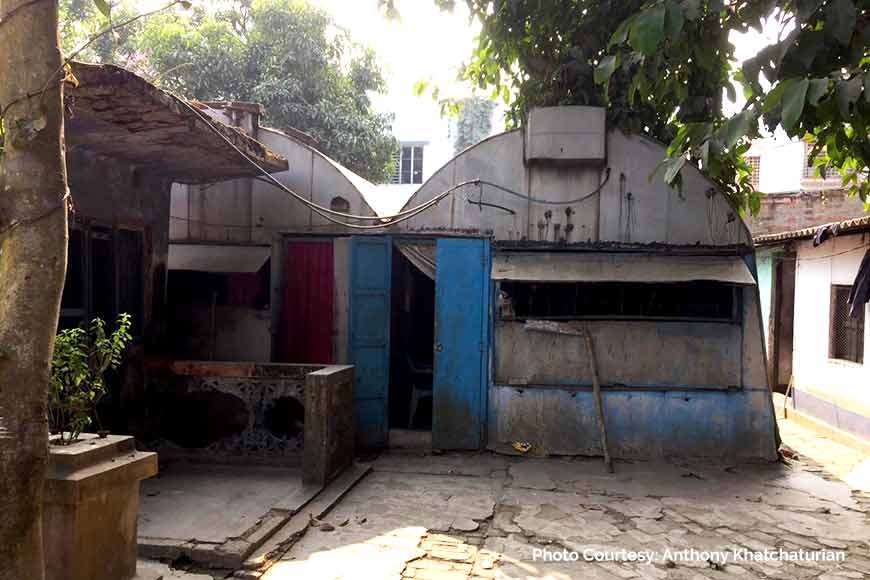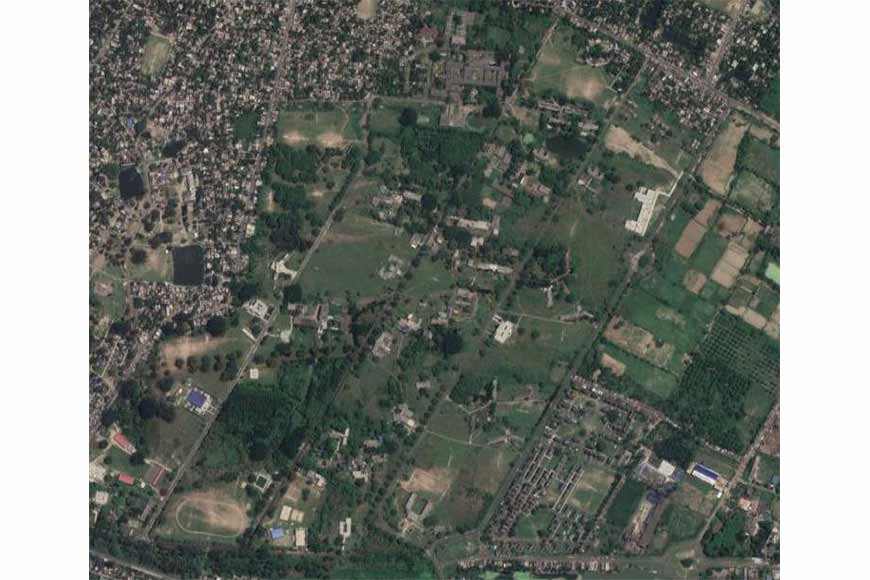How Kolkata’s ‘new township’ is an old American township!

The vast expanse of New Town and the seemingly endless – and endlessly cyclical for those who do not live there – grid system of roads and roundabouts of Salt Lake have graduated from being far flung satellite townships to an accepted part of greater Kolkata. The expansion continues to push aggressively east and south; the former being New Town and Salt Lake, administratively known as ‘Bidhannagar’, while the latter rolls toward Garia, Rajpur Sonarpur and beyond to Baruipur. Although talks abound for an industrial west in Howrah, to take advantage of the station and highways heading out to Delhi, Mumbai and Chennai, this has not yet materialised into a coordinated plan.
 Kalyani-AIIMS
Kalyani-AIIMS
Conceived at around the same time as Bidhannagar but slow to take off, Kalyani is positioning itself as Kolkata’s most economically prominent suburb and it has been given two recent adrenaline boosts. The first is the arrival of AIIMS. In line with the central government’s commitment to develop an AIIMS in every state, Bengal provided land for AIIMS in Kalyani. AIIMS, the sheer size of it, brings with it not only hundreds of staff but potentially lakhs of patients annually, along with their families, from all over the state.
‘Roosevelt Nagar’ was one such USAAF base. Comprising four landing strips, it was a major hub for ‘The Hump’ operations, with aviation fuel being piped in all the way from Budge Budge. A small town made up of temporary tin sheds popped up, the remnants of which can be seen even today. Roosevelt Nagar became ‘Kalyani’ after the war, when Bidhan Chandra Roy needed space to host the 1950 meeting of the Indian National Congress.
The second boost has been the airport. Netaji Subhas Chandra Bose (or colloquially ‘Dum Dum’) International Airport is a few years away from reaching maximum capacity, and pressure had been put on the Bengal government to provide space for expansion. Kalyani has been shortlisted with the minimum 1,500 acres, possibly up to 5,000 acres, being ring-fenced to split domestic and international traffic between Dum Dum and Kalyani. To aid this rapid growth, Kalyani has come under the Kolkata Metropolitan Development Authority (KMDA), will be given a Kolkata pin code, the Metro will (someday) connect the town, and a high-speed, 30-minute rail link will connect the airport to central Kolkata.
But the bizarre twist is that decades earlier, and thousands of miles away in Hawaii, a series of events gave birth to the town, when the Japanese bombing of Pearl Harbour brought the USA into World War II. Back then, China was not the military and economic powerhouse it is today, and was in imminent danger of being overrun by the Imperial Japanese. The Allied and Axis powers clashed in Burma and the need for a supply chain to support the Allied effort quickly emerged. The only safe country for the Allies to base themselves was India. There was just one minor obstruction between India on one side and China and Burma on the other – the tallest mountain range in the world, the Himalayas.
 USAAF temporary accommodation sheds
USAAF temporary accommodation sheds
The United States Army Air Force (USAAF – there was no US Air Force back then) launched the most ambitious logistics operation the world had ever seen – ‘The Hump’. A series of mini USAAF bases sprang up along the Indian side of the Himalayas, and everything from matchboxes to munitions were airlifted over the treacherous mountains to supply the troops fighting the Japanese. From April 1942 to November 1945, an astonishing 7,76,532 tonnes of material and 33,400 people were airlifted (47,000 people on the return trip after the war) on 1,56,977 flights from bases in India, totaling 1.5 million flying hours, at a cost of 41 aircraft and 1,314 lives. Even today, the US government has an active unit searching for bodies in this region.
 Google Earth image of four parallel airstrips now situated within the Kalyani University premises
Google Earth image of four parallel airstrips now situated within the Kalyani University premises
Among the many notable participants in the operation were Robert McNamara (basing himself at the Grand Hotel during this time, he later became Defence Secretary under John F. Kennedy and President of the World Bank. He revisited Kolkata in the latter role, only to be met with black flags wherever he went for his role in the war) and the founders of Cathay Pacific airline.
‘Roosevelt Nagar’ was one such USAAF base. Comprising four landing strips, it was a major hub for ‘The Hump’ operations, with aviation fuel being piped in all the way from Budge Budge. A small town made up of temporary tin sheds popped up, the remnants of which can be seen even today. Roosevelt Nagar became ‘Kalyani’ after the war, when Bidhan Chandra Roy needed space to host the 1950 meeting of the Indian National Congress. Taking a liking to the town and its proximity to Kolkata, he laid the foundations of the planned town it is today. This was aided by the arrival of Kalyani University, the Indian Institute of Science, Education and Research (IISER), the Bidhan Chandra Krishi Viswavidyalaya, United Breweries, and Dabur.
Today, amidst the booming infrastructure of Kalyani, a slow and observant drive around the town will unveil telltale signs of the old Roosevelt Nagar. The KMDA would be wise to protect these few remnants of the town’s important past.










